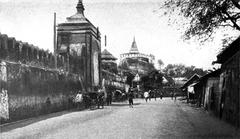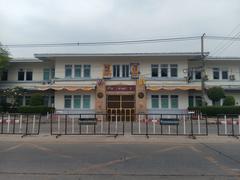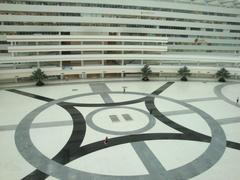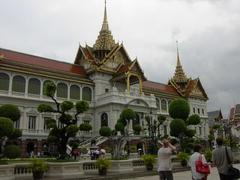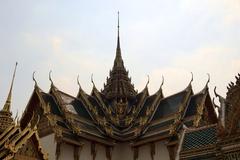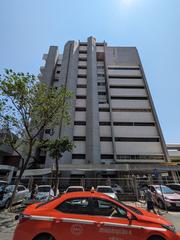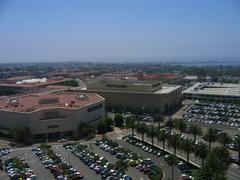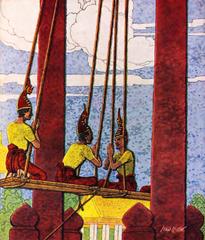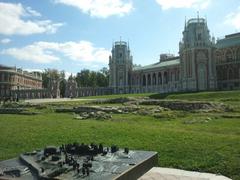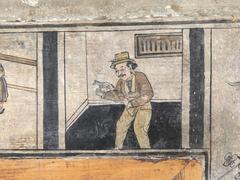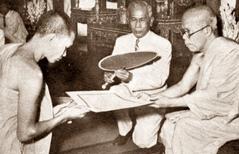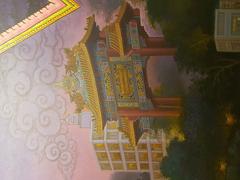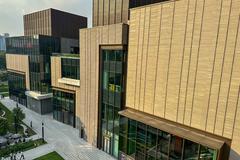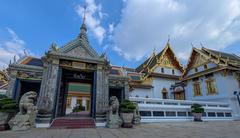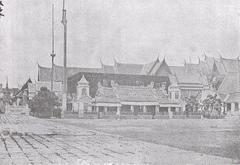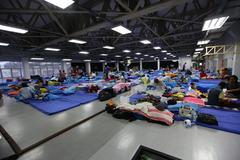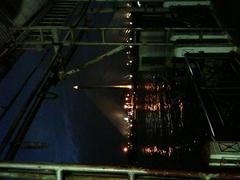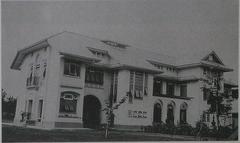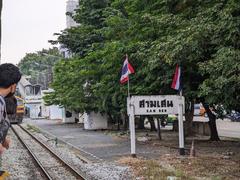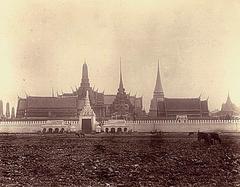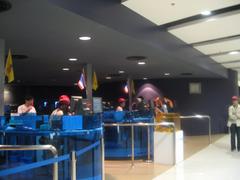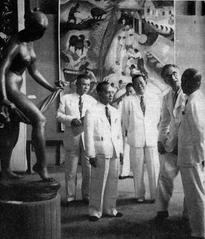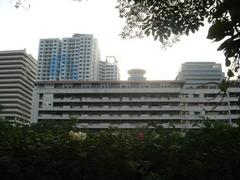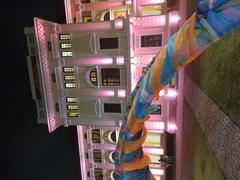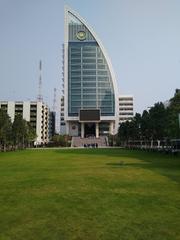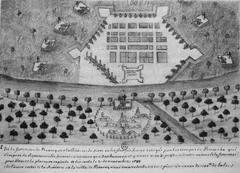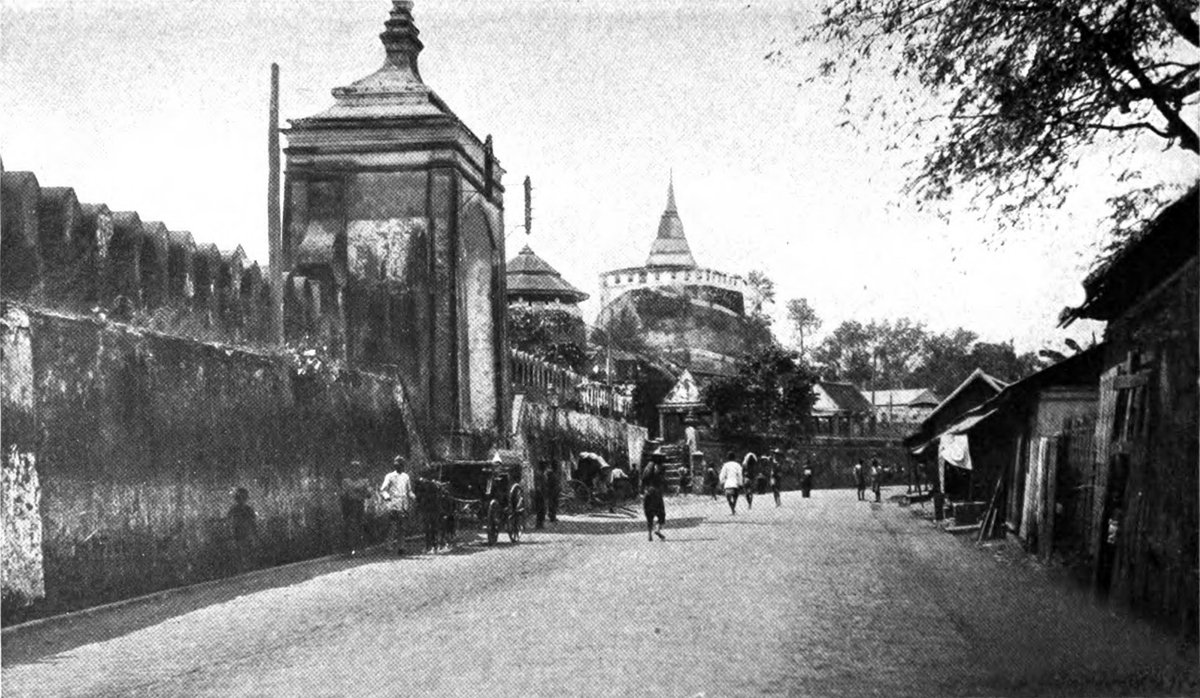
Visiting Mahakan Fort: History, Tickets, and Travel Tips
Date: 17/08/2024
Introduction
Discover the captivating blend of history, architecture, and cultural heritage at Mahakan Fort, one of Bangkok’s most significant historical landmarks. Constructed in 1783 under the reign of King Rama I, Mahakan Fort was part of a comprehensive defensive system designed to protect the newly established capital of Rattanakosin from potential invasions, particularly by the Burmese (Audiala). The fort’s octagonal design and strategic location near the Phan Fa Lilat Bridge reflect the military architectural practices of the late 18th century (Lonely Planet). As one of the few remaining original fortifications in Bangkok, Mahakan Fort has undergone several restoration projects, notably during the bicentennial celebrations of Bangkok’s founding in 1982, to preserve its historical and architectural integrity (Audiala). Today, the fort is integrated into a public park, making it accessible to both locals and tourists, and offering a unique glimpse into Bangkok’s rich historical past (Lonely Planet).
Table of Contents
- Introduction
- Historical Background
- Preservation and Restoration
- Modern-Day Significance
- Community and Cultural Impact
- Future Prospects
- Visitor Information
- Nearby Attractions
- Travel Tips
- FAQ
- Conclusion
Historical Background
Origins and Construction
Mahakan Fort, also known as Pom Mahakan, is a significant historical structure in Bangkok, Thailand. Constructed in 1783 during the reign of King Rama I, the founder of the Chakri Dynasty, the fort was part of an extensive defensive system designed to protect the newly established capital of Rattanakosin from potential invasions, particularly by the Burmese. The fort was one of 14 defensive bastions built to safeguard the city from potential threats (Audiala).
Architectural Design
The fort’s design is octagonal, a common architectural style for military fortifications of that era. The whitewashed walls and strategic location near the Phan Fa Lilat Bridge and adjacent to Maha Chai Road provided a vantage point to monitor and respond to threats from the Chao Phraya River and surrounding areas (Lonely Planet). The fort’s construction utilized traditional materials and techniques, reflecting the architectural practices of the late 18th century.
Historical Context
The construction of Mahakan Fort and other fortifications in Bangkok was a direct response to the fall of Ayutthaya in 1767 and the subsequent establishment of the Thonburi Kingdom by King Taksin. After the fall of Ayutthaya, King Taksin moved the capital to Thonburi, located on the west bank of the Chao Phraya River. However, when King Rama I ascended to the throne, he relocated the capital to the east bank, founding Rattanakosin. This move necessitated the construction of new defensive structures, including Mahakan Fort, to protect the new capital (Audiala).
Preservation and Restoration
Over the centuries, Mahakan Fort has undergone several restoration efforts to preserve its historical and architectural integrity. One of the most significant restoration projects took place in 1982, during the bicentennial celebrations of Bangkok’s founding. The Bangkok Metropolitan Administration (BMA) and the Fine Arts Department collaborated to restore the fort, ensuring that it remained a prominent historical landmark. These efforts have continued, with ongoing maintenance to preserve the fort for future generations (Audiala).
Modern-Day Significance
Today, Mahakan Fort stands as one of the few remaining original fortifications in Bangkok. Along with Phra Sumen Fort, it is one of only two forts that have survived the rapid modernization and urban development of the city. The fort is now under the care of the Bangkok Metropolitan Administration and has been integrated into a public park, making it accessible to both locals and tourists. This transformation into a public space has helped to raise awareness about the city’s rich historical heritage and the importance of preserving such landmarks (Lonely Planet).
Community and Cultural Impact
The area surrounding Mahakan Fort has historically been home to a community that dates back to the early days of Rattanakosin. This community has played a crucial role in the fort’s history, contributing to its preservation and maintenance. In recent years, there have been efforts to develop the area into a cultural and historical site, further enhancing its significance as a tourist attraction. The fort and its surrounding community offer a unique glimpse into Bangkok’s past, providing valuable insights into the city’s development and cultural heritage (Audiala).
Future Prospects
Looking ahead, the future of Mahakan Fort will likely involve continued efforts to balance preservation with urban development. The fort’s integration into a public park and its designation as a registered ancient monument are positive steps towards ensuring its long-term preservation. Additionally, ongoing community engagement and cultural initiatives will play a crucial role in maintaining the fort’s historical and cultural significance. As Bangkok continues to evolve, Mahakan Fort will remain a vital link to the city’s past, offering valuable lessons for future generations (Audiala).
Visitor Information
Visiting Hours
Mahakan Fort is open to the public daily from 8:30 AM to 5:00 PM. There is no entry fee, making it an accessible attraction for both locals and tourists. Visitors are encouraged to check the official website or contact the Bangkok Metropolitan Administration for the most up-to-date information on visiting hours and any potential restrictions or special events (Audiala).
Tickets and Special Events
Admission to Mahakan Fort is free, and visitors can enjoy the site at their leisure. Occasionally, special events and cultural activities are held at the fort, providing a deeper insight into Bangkok’s history and culture. For updated information on any upcoming events, visitors should check with the Bangkok Metropolitan Administration.
Guided Tours and Photographic Spots
Guided tours are available for those interested in a more detailed exploration of Mahakan Fort’s history and significance. These tours provide an in-depth look at the fort’s architecture, historical context, and preservation efforts. Additionally, the fort offers several excellent photographic spots, ideal for capturing the essence of this historical landmark.
Nearby Attractions
Visitors to Mahakan Fort can also explore nearby attractions such as the Phra Sumen Fort, the Golden Mount (Wat Saket), and the Rattanakosin Exhibition Hall. Public transportation, including buses and tuk-tuks, provides convenient access to these sites. It is advisable to wear comfortable walking shoes and bring water, especially during the hot season (Lonely Planet).
Travel Tips
For those planning to visit Mahakan Fort, it is recommended to use public transportation for convenience. The nearest MRT station is Sam Yot, and visitors can also take a boat to Panfa Leelard Pier. Comfortable walking shoes and water are essential, especially during the hot season. Additionally, exploring the surrounding community and nearby attractions can provide a more comprehensive understanding of Bangkok’s rich historical and cultural heritage (Want See Bangkok).
FAQ
What are the visiting hours for Mahakan Fort?
Mahakan Fort is open daily from 8:30 AM to 5:00 PM.
Is there an entry fee for Mahakan Fort?
No, there is no entry fee to visit Mahakan Fort.
Are guided tours available at Mahakan Fort?
Yes, guided tours are available for those interested in a more detailed exploration of the fort.
What are some nearby attractions to Mahakan Fort?
Nearby attractions include Phra Sumen Fort, the Golden Mount (Wat Saket), and the Rattanakosin Exhibition Hall.
How can I get to Mahakan Fort?
The nearest MRT station is Sam Yot, and visitors can also take a boat to Panfa Leelard Pier.
Conclusion
Mahakan Fort is a must-visit historical site in Bangkok, offering a unique glimpse into the city’s past. With its rich history, architectural beauty, and modern-day significance, it provides an enriching experience for both locals and tourists. Plan your visit today and explore the fascinating history of Mahakan Fort. For more information and updates, download the Audiala mobile app, check out related posts, or follow us on social media.
References
- Audiala. (n.d.). Mahakan Fort. Retrieved from https://audiala.com/en/thailand/bangkok/ปอมมหากาฬ
- Lonely Planet. (n.d.). Mahakan Fort. Retrieved from https://www.lonelyplanet.com/thailand/bangkok/banglamphu/attractions/mahakan-fort/a/poi-sig/408064/1324178
- Bangkok Post. (2015, October 18). Mahakan Fort community keeps up eviction fight. Retrieved from https://www.bangkokpost.com/thailand/special-reports/715884/mahakan-fort-community-keeps-up-eviction-fight
- Coconuts. (2016, March 4). End of an era: Pom Mahakan residents face eviction, fort to be turned into public park. Retrieved from https://coconuts.co/bangkok/end-era-pom-mahakan-residents-face-eviction-fort-be-turned-public-park/
